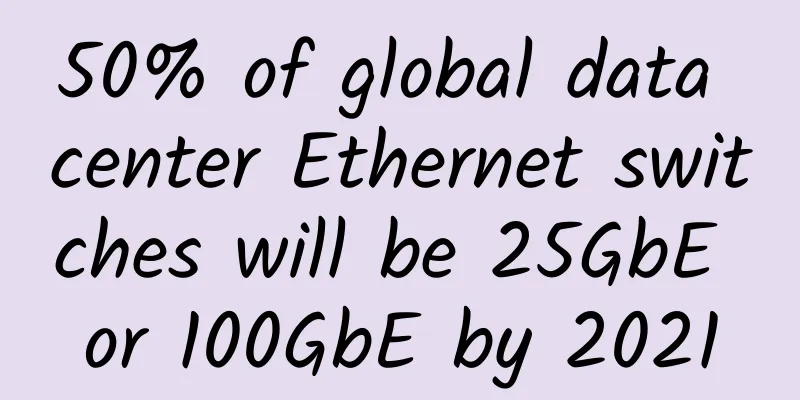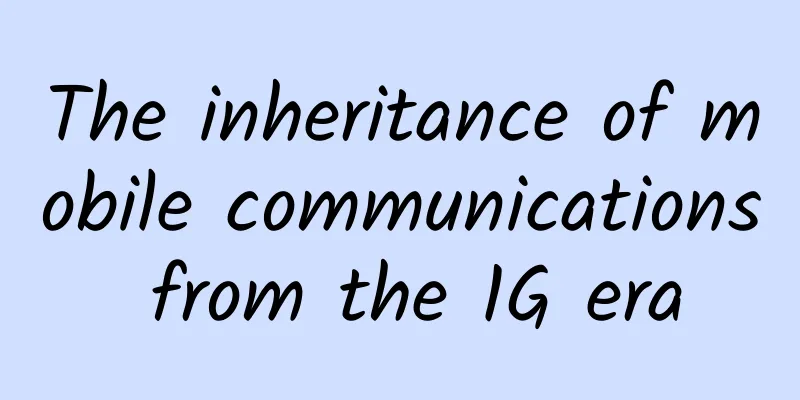How should we view 6G?

|
Recently, Canadian media reported that Huawei has confirmed that it has started 6G network research in Ottawa, Canada, and has started negotiations with researchers from several Canadian universities. Huawei said that its own Ottawa R&D laboratory will guide Huawei's global 6G development. After the news came out, many media rushed to forward it, which once again attracted attention from both inside and outside the industry to Huawei, and also attracted people's attention to 6G. "Hasn't the 5G license just been issued? The latest 5G network and 5G mobile phones are not used yet, so why are we talking about 6G? Will 6G replace 5G soon?" In fact, Xiaozaojun feels that many media are too sensitive about this news. If Xiaozaojun remembers correctly, this is at least the third time there has been intensive coverage of 6G. The first time was during the two sessions in March 2018, when Miao Wei, the Minister of Industry and Information Technology, revealed in an interview with CCTV's "Voice of the Minister" that our country has begun to study the development of 6G. As a result, the national media was in an uproar and reported countless times.
The second time was at the beginning of this year, when the US-China 5G struggle was at its most intense. US President Trump threatened that 6G was not far away and that the US might skip 5G and directly develop 6G. This statement set off an uproar in domestic public opinion. Some media exclaimed: "China's 5G is in danger!" But it didn't take long for the situation to calm down.
Therefore, it is not surprising that 6G is once again hyped by the media. Xiaozaojun thinks that most people working in the communications industry can see that this news is sensational and intended to deceive newbies. Those who are familiar with the military must have heard this saying: "Equip one generation, develop one generation, and pre-research one generation." This is what our country's military equipment always adopts: produce and equip one generation of equipment, develop the next generation of equipment, and then pre-explore and research the next generation of equipment. This clear development rhythm can ensure that the research progress of military equipment is more reasonable, neither radical nor backward. It also has great benefits in improving resource efficiency, technological upgrading, and talent training and reserve. The same is true in our communications industry. In our country, the saying has changed to "use one generation, study one generation, and reserve one generation." The words are different, but the principle is the same. Looking back at the development process from 1G to 5G, we can easily find that the speed of technological updates is accelerating. The speed of launching new technology standards is also accelerating. Although we have just opened the door to 5G, it is foreseeable that 6G will definitely not be far away from us. In this regard, what Trump said earlier is indeed correct. But the other half of what Trump said is very debatable. In other words, can we skip 5G and go directly to 6G? Xiaozaojun thinks this is impossible.
For more than a hundred years, human communication technology has been developed entirely based on the theory of electromagnetic waves. So far, this basic theory has not achieved any substantial breakthroughs. Without breakthroughs in basic theory, the research and development iteration of communication technology will be restricted. Many of our key communication technologies are achieved by making incremental improvements and upgrades to existing technologies. For example, modulation technology has evolved from 16QAM to 64QAM, 256QAM, and then to 1024QAM; another example is multiple access method, from FDMA to TDMA to CDMA, and then to OFDMA; another example is antenna technology, from single antenna to multiple antennas, from 2X2 to 4X4, 8X8, and then to 16X16. As a result, the accumulation of technology is particularly important. It is also because of this that the right to speak in the communications industry is concentrated in the hands of a few large companies. In order to maintain technological advantages, we must maintain the scale of market applications and undergo large-scale commercial tests. If we skip 5G and go for 6G, it will affect technology accumulation and talent training, thereby affecting competitiveness and even being marginalized. So I think it is unrealistic to skip 5G, and American telecommunications companies will not be so stupid. Let’s take a look at whether it is too early to develop 6G now. The so-called competition in communication standards means that companies in the communication industry select technologies that they think are promising and invest in R&D. They make technological innovations and apply for patents. When the 3GPP organization starts to formulate standards, these companies will desperately push forward their advantageous patents, hoping that they can be included in the standards, so that they can collect patent fees and increase their voice. If you wait until 3GPP starts discussing standards before starting technical research, it will be too late. Both Huawei and ZTE have large standard pre-research departments that specialize in predicting the direction of technology development and technology route planning, that is, early layout. Since it is a layout, of course the sooner the better. Take 5G as an example. The ITU (International Telecommunication Union) officially determined the three major application scenarios of 5G in September 2015. 3GPP started work on the first phase of 5G standards (R15 version) in 2017. When will the European Union, the United States, Japan, South Korea, and China, which represent the world's major communications powers, start research on 5G standards? Around 2010. China's IMT-2020 (5G) Promotion Group was established in 2013, which is considered late. When did Huawei start researching 5G standards? According to data, Huawei had already started preliminary research on 5G-related technologies as early as 2008. You should know that the Ministry of Industry and Information Technology issued domestic 3G licenses on January 7, 2009. In other words, Huawei started researching 5G before 3G was built in China. ZTE started 5G research at about the same time. So, what's so surprising about us starting 6G research today when 5G licenses have just been issued in China? I believe that at least three years ago, the major giants had already quietly started 6G research, but they just didn't make it public. The news now shows that the preliminary research has made some progress. Moreover, the news is more for publicity purposes, and there are also some considerations of competition.
Finally, let’s take a quick look at what’s so special about 6G. There is a saying in the industry that there will be no more "G" after 5G. What does it mean? It means that 5G is the final form of mobile communications. Because the basic theory cannot be broken through, the only way to go is to tinker with the technology and continue to "squeeze the toothpaste" on performance parameters. Such technological progress can no longer be called a "G (generation)", at best it is just a patch. In fact, this statement makes sense, and Xiaozaojun also agrees with it. 4G changes life, 5G changes society. The goal of 5G is to realize the interconnection of all things. This is a long-term task, and it is not determined by technology. Blindly launching a new generation of standards for the sake of technological upgrades without demand is meaningless. Well, even if we upgrade to 6G, what will 6G look like? We can find some "clues" from the relevant documents of the standard organization. The main standard stages of 5G are R15 and R16. R17 after this is actually the next upgrade target of 5G. According to the latest news from 3GPP, the potential topics collected in the R17 discussion area are as follows: NR Light: Optimized for operation in mid-range NR devices (e.g. MTC, wearables, etc.); Small data transfer optimization: small data packets/inactive data transfer optimization; Sidelink enhancement: Sidelink is a technology used in D2D direct communication. Rel-17 will further explore its use cases in V2X, commercial terminals, and emergency communications to achieve maximum commonality in these applications, including the FR2 (>6GHz) frequency band. Frequencies above 52.6 GHz: The upper limit of the FR2 millimeter wave band defined in Rel-15 is 52.6 GHz, and the waveforms of the frequency bands above 52.6 GHz will be studied in Rel-17. Multi-SIM card operation: Study the impact on RAN and the impact on regulations when using multi-SIM card operation; NR multicast/broadcast: driven by V2X and public safety applications; Coverage enhancement: clarify requirements for all relevant scenarios, with a focus on extreme coverage, including indoors and over wider areas; Non-terrestrial network NR: NR supports satellite communication related standardization; Positioning enhancement: factory/campus positioning, IoT, V2X positioning, 3D positioning, achieving centimeter-level accuracy, including latency and reliability improvements; RAN data collection enhancement: including SON and MDT enhancements, collecting data to implement AI; NB-IoT and eMTC enhancements IIoT and URLLC Enhancements MIMO Enhancement Integrated access and backhaul enhancement Unlicensed spectrum NR enhancement Energy saving enhancement As you can see, there are a lot of "enhanced" words, which indicates further upgrades based on existing technologies. In addition to "enhancement", there are several key words: non-terrestrial network NR and frequencies above 52.6GHz. This is closely related to the two important research directions of 6G proposed a few years ago (low-orbit communication satellites and terahertz). Terahertz is THz, 1THz=1000GHz, an electromagnetic wave frequency band higher than millimeter waves. Let's take a look at a picture leaked by IEEE: The title of the picture is - 6G wireless network: vision, requirements, architecture and key technologies. Look at the words I marked with a red five-pointed star: Space Travel, which means "space travel"; Interaction (People and World), which means "interaction between people and the world"; ≥1 Tb/s, no need to explain this, right? Scientists believe that 6G will rise to the level of space, and 6G will be used in space. In terms of network positioning, it will also rise. 6G will promote the integration of people and the world on the basis of the Internet of Everything. As for speed, 5G will increase 100 times to 1Tb/s (1024Gb/s). I have to say, it’s a very bold idea. Well, that’s all for the analysis and interpretation of 6G. In short, compared to 6G, we should worry more about 5G. How to build 5G, how to promote its implementation, and how to create benefits and value are what we should be most concerned about now. As for 6G, let scientists study it slowly. It will take at least several years before it can be discussed on the table! |
<<: The fatal factor affecting TCP connection throughput: HOL
>>: Understand how HTTPS works
Recommend
V.PS: €9.95/year VPS with new German data center, 1G memory/15G SSD/1TB monthly traffic
The Nano series provided by V.PS adds a German da...
The need for SD-WAN in a multi-cloud world
With the advent of a multi-cloud world, software-...
How to choose communication protocol for IoT terminal devices
At present, most IoT modules on the market suppor...
spinservers: San Jose 10Gbps bandwidth server starts at $109/month, Dallas 10Gbps server starts at $89/month
spinservers is a site under Majestic Hosting Solu...
Big and small! The little sister tells you everything about BeautifulSoup
[[427165]] Learn more about BeautifulSoup Scrapin...
5GRedCap: The role of RedCap in 5G evolution
3GPP Release (Rel) 17, due in mid-2022, introduce...
200M broadband speed still can't be increased. It turns out that these points are not done correctly.
As early as last year's World Telecommunicati...
DiyVM: 69 yuan/month XEN-dual core/2G memory/50G hard disk/2M/Hong Kong CN2 data center
DiyVM is a long-established Chinese hosting compa...
DogYun celebrates the 25th anniversary of Hong Kong's return to China. Hong Kong server is available for 2 months at 450 yuan, dual E5/32G/1TB SSD/20M bandwidth
DogYun has launched a special promotion for the 2...
Analysis on the Evolution of Home Wi-Fi Transmission Network Technology
Author: Tang Xiangming, Unit: China Mobile Smart ...
Virtono: 14 new data centers added recently, 40% discount on down payment, starting from €17.9/year
Virtono recently released a 40% discount code for...
The future of 5G and IoT in smart cities
Simply put, a "smart city" leverages em...
Five security myths about SD-WAN that you must know
In order to save money and reduce the use of MPLS...
What is edge computing in IoT?
The growing number of “connected” devices is gene...









